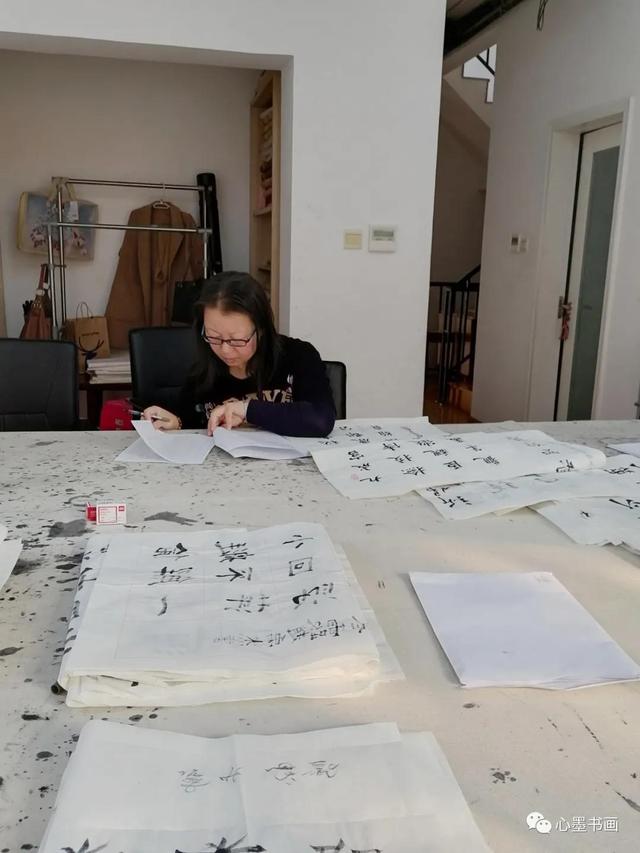SVM代码实践
这里写自定义目录标题
- 练习1:鸢尾花分类
- 练习2:SVM实现一个多分类器
- 练习3:SVM选用不同核参数
- 练习4:手写数字识别
练习1:鸢尾花分类
#!/usr/bin/python
# -*- coding:utf-8 -*-
import numpy as np
import pandas as pd
import matplotlib as mpl
import matplotlib.pyplot as plt
from sklearn import svm
from sklearn.model_selection import train_test_split
from sklearn.metrics import accuracy_score
# 'sepal length', 'sepal width', 'petal length', 'petal width'
iris_feature = u'花萼长度', u'花萼宽度', u'花瓣长度', u'花瓣宽度'
if __name__ == "__main__":
path = '..\\8.Regression\\iris.data' # 数据文件路径
data = pd.read_csv(path, header=None)
x, y = data[range(4)], data[4]
y = pd.Categorical(y).codes
x = x[[0, 1]]
x_train, x_test, y_train, y_test = train_test_split(x, y, random_state=1, train_size=0.6)
# 分类器
clf = svm.SVC(C=0.1, kernel='linear', decision_function_shape='ovr')
# clf = svm.SVC(C=0.8, kernel='rbf', gamma=20, decision_function_shape='ovr')
clf.fit(x_train, y_train.ravel())
# 准确率
print(clf.score(x_train, y_train)) # 精度
print('训练集准确率:', accuracy_score(y_train, clf.predict(x_train)))
print(clf.score(x_test, y_test))
print('测试集准确率:', accuracy_score(y_test, clf.predict(x_test)))
# decision_function
print('decision_function:\n', clf.decision_function(x_train))
print('\npredict:\n', clf.predict(x_train))
# 画图
x1_min, x2_min = x.min()
x1_max, x2_max = x.max()
x1, x2 = np.mgrid[x1_min:x1_max:500j, x2_min:x2_max:500j] # 生成网格采样点
grid_test = np.stack((x1.flat, x2.flat), axis=1) # 测试点
# print 'grid_test = \n', grid_test
# Z = clf.decision_function(grid_test) # 样本到决策面的距离
# print Z
grid_hat = clf.predict(grid_test) # 预测分类值
grid_hat = grid_hat.reshape(x1.shape) # 使之与输入的形状相同
mpl.rcParams['font.sans-serif'] = [u'SimHei']
mpl.rcParams['axes.unicode_minus'] = False
cm_light = mpl.colors.ListedColormap(['#A0FFA0', '#FFA0A0', '#A0A0FF'])
cm_dark = mpl.colors.ListedColormap(['g', 'r', 'b'])
plt.figure(facecolor='w')
plt.pcolormesh(x1, x2, grid_hat, cmap=cm_light)
plt.scatter(x[0], x[1], c=y, edgecolors='k', s=50, cmap=cm_dark) # 样本
plt.scatter(x_test[0], x_test[1], s=120, facecolors='none', zorder=10) # 圈中测试集样本
plt.xlabel(iris_feature[0], fontsize=13)
plt.ylabel(iris_feature[1], fontsize=13)
plt.xlim(x1_min, x1_max)
plt.ylim(x2_min, x2_max)
plt.title(u'鸢尾花SVM二特征分类', fontsize=16)
plt.grid(b=True, ls=':')
plt.tight_layout(pad=1.5)
plt.show()

练习2:SVM实现一个多分类器
#!/usr/bin/python
# -*- coding:utf-8 -*-
import numpy as np
from sklearn import svm
from scipy import stats
from sklearn.metrics import accuracy_score
import matplotlib as mpl
import matplotlib.pyplot as plt
def extend(a, b, r):
x = a - b
m = (a + b) / 2
return m-r*x/2, m+r*x/2
if __name__ == "__main__":
np.random.seed(0)
N = 20
x = np.empty((4*N, 2))
means = [(-1, 1), (1, 1), (1, -1), (-1, -1)]
sigmas = [np.eye(2), 2*np.eye(2), np.diag((1,2)), np.array(((2,1),(1,2)))]
for i in range(4):
mn = stats.multivariate_normal(means[i], sigmas[i]*0.3)
x[i*N:(i+1)*N, :] = mn.rvs(N)
a = np.array((0,1,2,3)).reshape((-1, 1))
y = np.tile(a, N).flatten()
clf = svm.SVC(C=1, kernel='rbf', gamma=1, decision_function_shape='ovo')
# clf = svm.SVC(C=1, kernel='linear', decision_function_shape='ovr')
clf.fit(x, y)
y_hat = clf.predict(x)
acc = accuracy_score(y, y_hat)
np.set_printoptions(suppress=True)
print(u'预测正确的样本个数:%d,正确率:%.2f%%' % (round(acc*4*N), 100*acc))
# decision_function
print(clf.decision_function(x))
print(y_hat)
x1_min, x2_min = np.min(x, axis=0)
x1_max, x2_max = np.max(x, axis=0)
x1_min, x1_max = extend(x1_min, x1_max, 1.05)
x2_min, x2_max = extend(x2_min, x2_max, 1.05)
x1, x2 = np.mgrid[x1_min:x1_max:500j, x2_min:x2_max:500j]
x_test = np.stack((x1.flat, x2.flat), axis=1)
y_test = clf.predict(x_test)
y_test = y_test.reshape(x1.shape)
cm_light = mpl.colors.ListedColormap(['#FF8080', '#A0FFA0', '#6060FF', '#F080F0'])
cm_dark = mpl.colors.ListedColormap(['r', 'g', 'b', 'm'])
mpl.rcParams['font.sans-serif'] = [u'SimHei']
mpl.rcParams['axes.unicode_minus'] = False
plt.figure(facecolor='w')
plt.pcolormesh(x1, x2, y_test, cmap=cm_light)
plt.scatter(x[:, 0], x[:, 1], s=40, c=y, cmap=cm_dark, alpha=0.7)
plt.xlim((x1_min, x1_max))
plt.ylim((x2_min, x2_max))
plt.grid(b=True)
plt.tight_layout(pad=2.5)
plt.title(u'SVM多分类方法:One/One or One/Other', fontsize=18)
plt.show()

练习3:SVM选用不同核参数
#!/usr/bin/python
# -*- coding:utf-8 -*-
import numpy as np
from sklearn import svm
import matplotlib as mpl
import matplotlib.colors
import matplotlib.pyplot as plt
def show_accuracy(a, b):
acc = a.ravel() == b.ravel()
# print '正确率:%.2f%%' % (100*float(acc.sum()) / a.size)
if __name__ == "__main__":
data = np.loadtxt('bipartition.txt', dtype=np.float, delimiter='\t')
x, y = np.split(data, (2, ), axis=1)
y = y.ravel()
# 分类器
clf_param = (('linear', 0.1), ('linear', 0.5), ('linear', 1), ('linear', 2),
('rbf', 1, 0.1), ('rbf', 1, 1), ('rbf', 1, 10), ('rbf', 1, 100),
('rbf', 5, 0.1), ('rbf', 5, 1), ('rbf', 5, 10), ('rbf', 5, 100))
x1_min, x1_max = x[:, 0].min(), x[:, 0].max() # 第0列的范围
x2_min, x2_max = x[:, 1].min(), x[:, 1].max() # 第1列的范围
x1, x2 = np.mgrid[x1_min:x1_max:200j, x2_min:x2_max:200j] # 生成网格采样点
grid_test = np.stack((x1.flat, x2.flat), axis=1) # 测试点
cm_light = mpl.colors.ListedColormap(['#77E0A0', '#FFA0A0'])
cm_dark = mpl.colors.ListedColormap(['g', 'r'])
mpl.rcParams['font.sans-serif'] = [u'SimHei']
mpl.rcParams['axes.unicode_minus'] = False
plt.figure(figsize=(14, 10), facecolor='w')
for i, param in enumerate(clf_param):
clf = svm.SVC(C=param[1], kernel=param[0])
if param[0] == 'rbf':
clf.gamma = param[2]
title = u'高斯核,C=%.1f,$\gamma$ =%.1f' % (param[1], param[2])
else:
title = u'线性核,C=%.1f' % param[1]
clf.fit(x, y)
y_hat = clf.predict(x)
show_accuracy(y_hat, y) # 准确率
# 画图
print (title)
print ('支撑向量的数目:', clf.n_support_)
print ('支撑向量的系数:', clf.dual_coef_)
print ('支撑向量:', clf.support_)
plt.subplot(3, 4, i+1)
grid_hat = clf.predict(grid_test) # 预测分类值
grid_hat = grid_hat.reshape(x1.shape) # 使之与输入的形状相同
plt.pcolormesh(x1, x2, grid_hat, cmap=cm_light, alpha=0.8)
plt.scatter(x[:, 0], x[:, 1], c=y, edgecolors='k', s=40, cmap=cm_dark) # 样本的显示
plt.scatter(x[clf.support_, 0], x[clf.support_, 1], edgecolors='k', facecolors='none', s=100, marker='o') # 支撑向量
z = clf.decision_function(grid_test)
# print 'z = \n', z
print ('clf.decision_function(x) = ', clf.decision_function(x))
print ('clf.predict(x) = ', clf.predict(x))
z = z.reshape(x1.shape)
plt.contour(x1, x2, z, colors=list('kbrbk'), linestyles=['--', '--', '-', '--', '--'],
linewidths=[1, 0.5, 1.5, 0.5, 1], levels=[-1, -0.5, 0, 0.5, 1])
plt.xlim(x1_min, x1_max)
plt.ylim(x2_min, x2_max)
plt.title(title, fontsize=14)
plt.suptitle(u'SVM不同参数的分类', fontsize=20)
plt.tight_layout(1.4)
plt.subplots_adjust(top=0.92)
plt.savefig('1.png')
plt.show()

练习4:手写数字识别
#!/usr/bin/python
# -*- coding:utf-8 -*-
import numpy as np
import pandas as pd
from sklearn import svm
import matplotlib.colors
import matplotlib.pyplot as plt
from PIL import Image
from sklearn.metrics import accuracy_score
import os
from sklearn.model_selection import train_test_split
from sklearn.model_selection import GridSearchCV
from time import time
def show_accuracy(a, b, tip):
acc = a.ravel() == b.ravel()
print (tip + '正确率:%.2f%%' % (100*np.mean(acc)))
def save_image(im, i):
im *= 15.9375
im = 255 - im
a = im.astype(np.uint8)
output_path = '.\\HandWritten'
if not os.path.exists(output_path):
os.mkdir(output_path)
Image.fromarray(a).save(output_path + ('\\%d.png' % i))
if __name__ == "__main__":
print ('Load Training File Start...')
data = np.loadtxt('optdigits.tra', dtype=np.float, delimiter=',')
x, y = np.split(data, (-1, ), axis=1)
images = x.reshape(-1, 8, 8)
y = y.ravel().astype(np.int)
print ('Load Test Data Start...')
data = np.loadtxt('optdigits.tes', dtype=np.float, delimiter=',')
x_test, y_test = np.split(data, (-1, ), axis=1)
print (y_test.shape)
images_test = x_test.reshape(-1, 8, 8)
y_test = y_test.ravel().astype(np.int)
print ('Load Data OK...')
# x, x_test, y, y_test = train_test_split(x, y, test_size=0.4, random_state=1)
# images = x.reshape(-1, 8, 8)
# images_test = x_test.reshape(-1, 8, 8)
matplotlib.rcParams['font.sans-serif'] = [u'SimHei']
matplotlib.rcParams['axes.unicode_minus'] = False
plt.figure(figsize=(15, 9), facecolor='w')
for index, image in enumerate(images[:16]):
plt.subplot(4, 8, index + 1)
plt.imshow(image, cmap=plt.cm.gray_r, interpolation='nearest')
plt.title(u'训练图片: %i' % y[index])
for index, image in enumerate(images_test[:16]):
plt.subplot(4, 8, index + 17)
plt.imshow(image, cmap=plt.cm.gray_r, interpolation='nearest')
save_image(image.copy(), index)
plt.title(u'测试图片: %i' % y_test[index])
plt.tight_layout()
plt.show()
# params = {'C':np.logspace(0, 3, 7), 'gamma':np.logspace(-5, 0, 11)}
# model = GridSearchCV(svm.SVC(kernel='rbf'), param_grid=params, cv=3)
model = svm.SVC(C=10, kernel='rbf', gamma=0.001)
print ('Start Learning...')
t0 = time()
model.fit(x, y)
t1 = time()
t = t1 - t0
print ('训练+CV耗时:%d分钟%.3f秒' % (int(t/60), t - 60*int(t/60)))
# print '最优参数:\t', model.best_params_
#clf.fit(x, y)
print( 'Learning is OK...')
print ('训练集准确率:', accuracy_score(y, model.predict(x)))
y_hat = model.predict(x_test)
print ('测试集准确率:', accuracy_score(y_test, model.predict(x_test)))
print (y_hat)
print (y_test)
err_images = images_test[y_test != y_hat]
err_y_hat = y_hat[y_test != y_hat]
err_y = y_test[y_test != y_hat]
print (err_y_hat)
print (err_y)
plt.figure(figsize=(10, 8), facecolor='w')
for index, image in enumerate(err_images):
if index >= 12:
break
plt.subplot(3, 4, index + 1)
plt.imshow(image, cmap=plt.cm.gray_r, interpolation='nearest')
plt.title(u'错分为:%i,真实值:%i' % (err_y_hat[index], err_y[index]))
plt.tight_layout()
plt.show()





